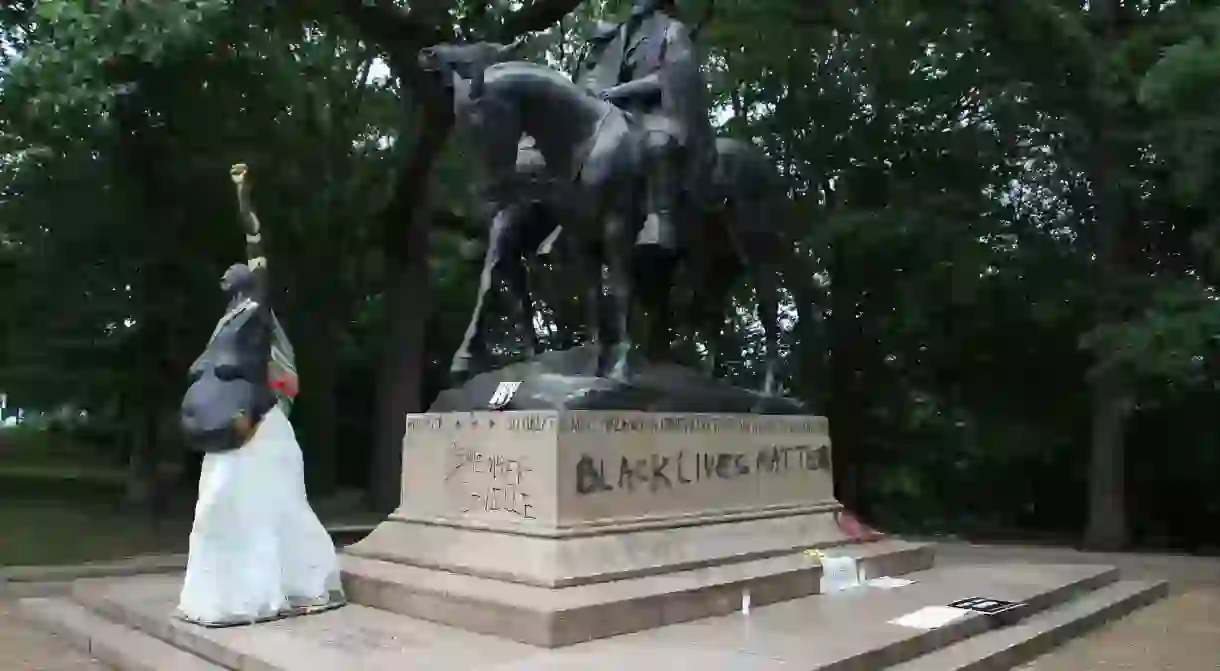A History of Confederate Monuments in the USA

Confederate monuments were thrust into the spotlight in the summer of 2017, when a white nationalist allegedly killed a protestor during days of demonstrations in Charlottesville, Virginia, by those opposed to and in support of the removal of monuments venerating Confederate soldiers.
But Charlottesville is far from the only American city that displays these monuments, and far from the only place where controversy over these monuments has been prominent.
And the former Confederate states (the 11 states that seceded from the United States at the beginning of the American Civil War and fought to protect the institution of slavery) aren’t the only places where the monuments are in place.

According to the Southern Poverty Law Center, which made a list of the monuments in 2016, the statues are spread out over 31 states and the District of Columbia. And many of them were not erected until long after the Civil War.
Confederate president Jefferson Davis famously warned against putting up monuments for the Confederate cause after the war was over, saying that they would only serve as dividing points in an already divided nation that needed to focus on healing after the war was over.
Instead, many of the monuments went up during the time period between 1890 and the 1950s, which was the same time during which restrictive and racist Jim Crow laws were at their apex. In contrast to earlier memorials to individual soldiers, these monuments glorified the leaders of the Confederacy and were meant to glorify their cause.

One of the largest and most famous of these monuments has been equated to the Mount Rushmore of the Confederacy. Located in Stone Mountain, Georgia, it features giant stone carvings of Davis, Robert E. Lee, and Stonewall Jackson. It took over 50 years to complete, and the United Daughters of the Confederacy raised much of the money used to finance its construction.
And monuments aren’t the only symbols of the Confederacy still around. Numerous states and cities have included Confederate battle flags on their state flags, and in other public spaces. The Southern Poverty Law Center estimates that over 1,500 of these symbols still exist.
Public opinion is turning against the symbols in some quarters, however. Officials have taken down these signs in cities from Baltimore, Maryland, to Durham, North Carolina, in response to protestors angry over the racial pain these symbols still evoke.













